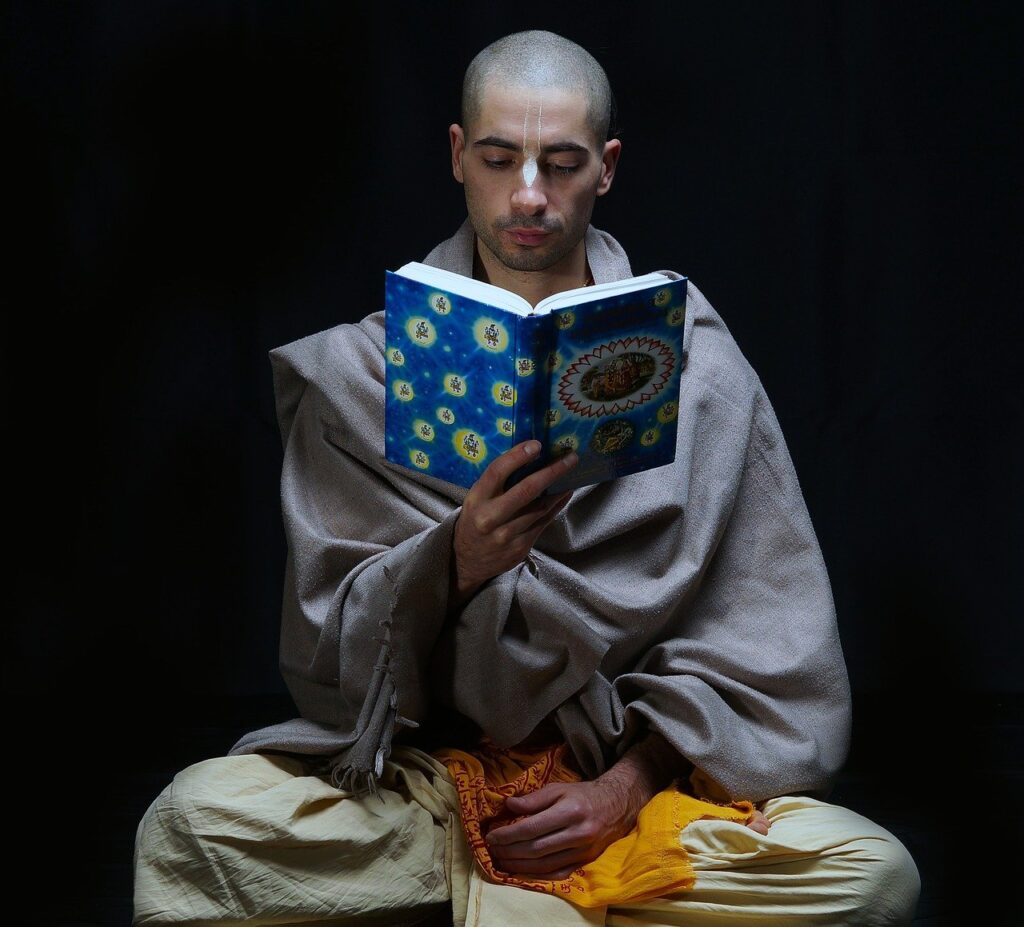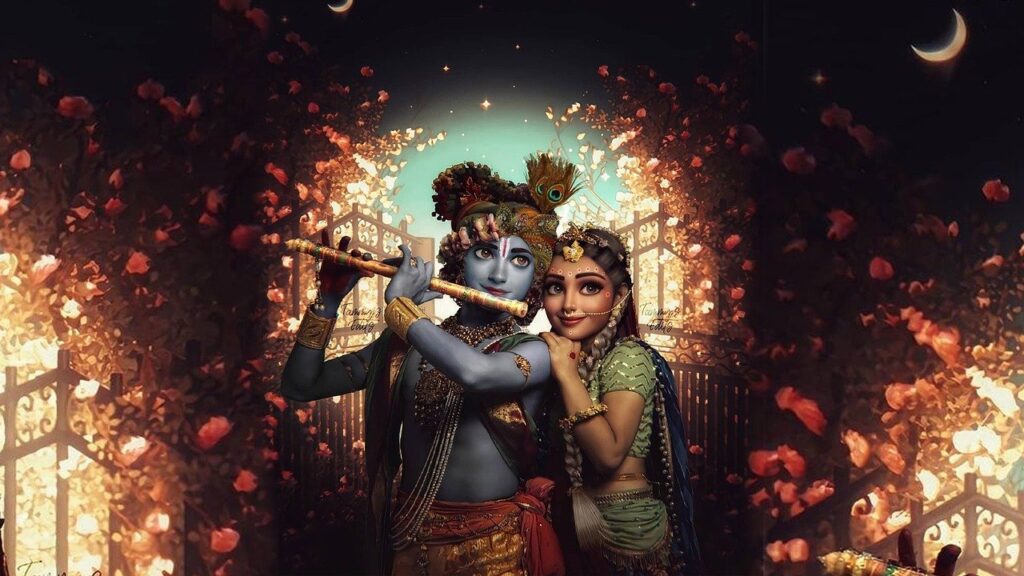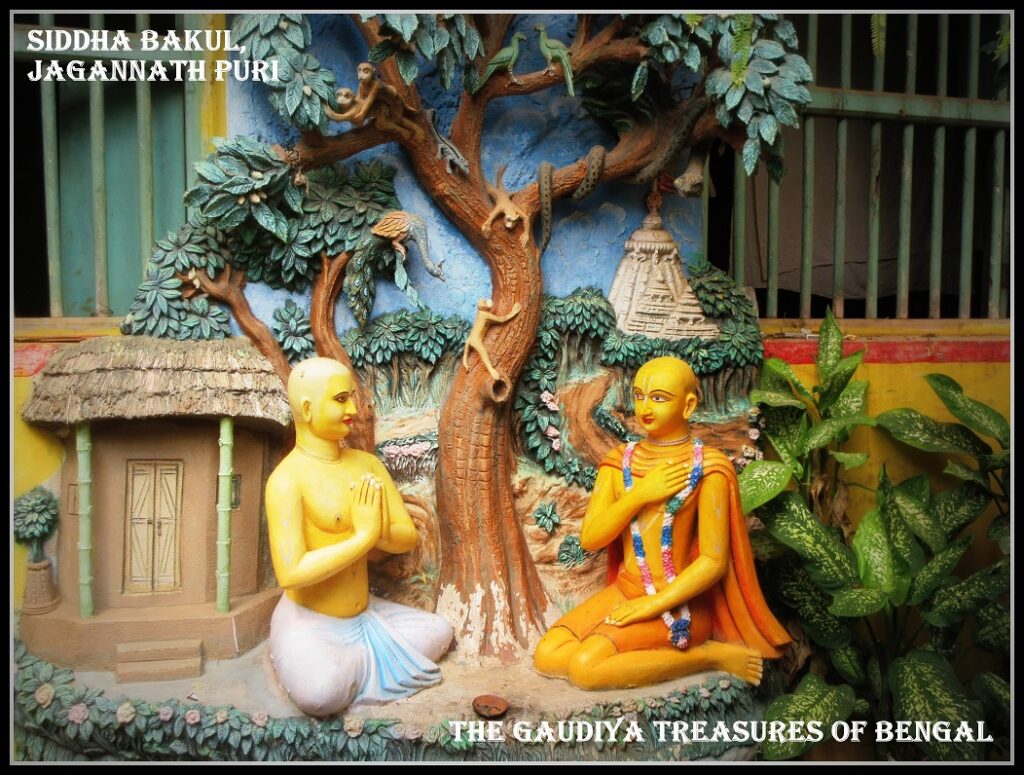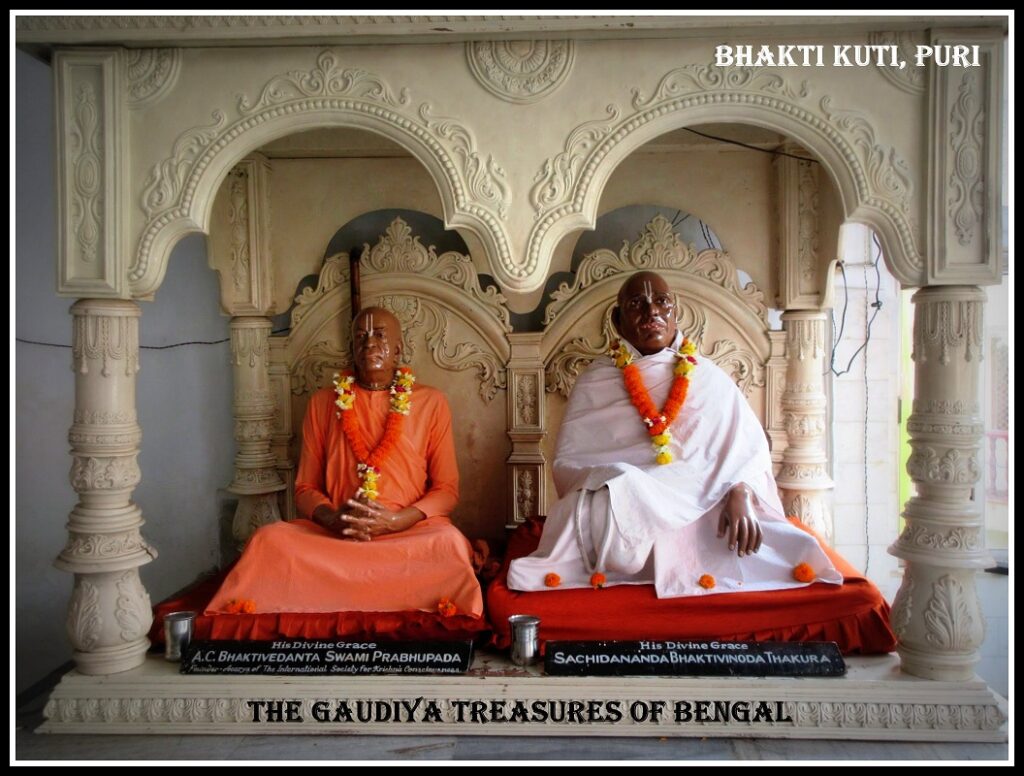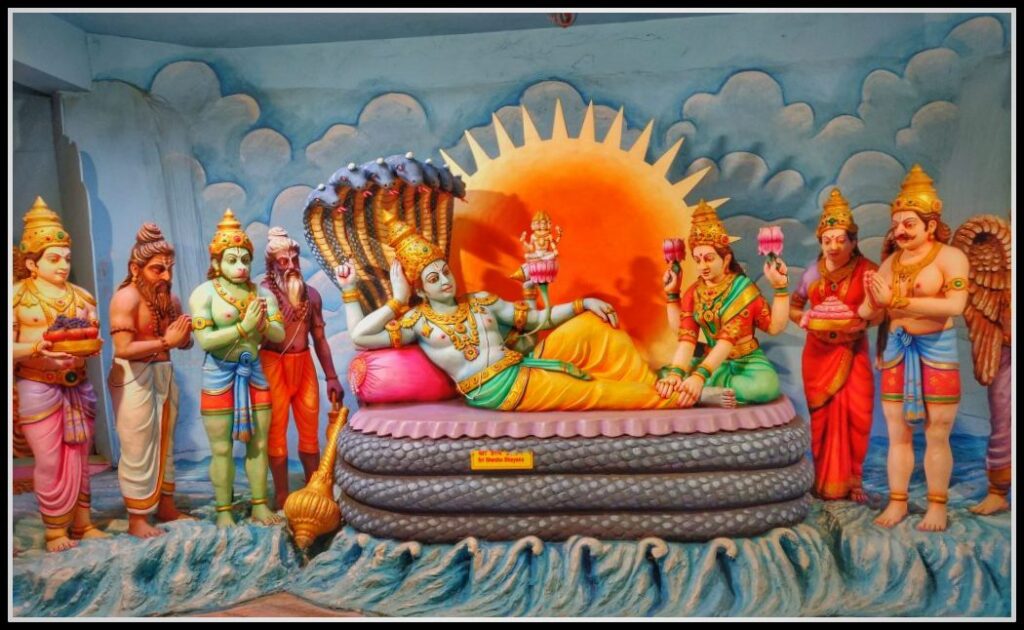
The Vedas, considered the oldest Hindu texts, were written around 2,500 years ago, but some trace them back to 3200 BC. They are revered as the world’s most ancient and authoritative literature, composed in Sanskrit and containing knowledge passed down through generations. While some assert that there was only one Veda – the Yajur Veda, which was subsequently divided into four parts – others consider the Rig Veda to be the oldest of all Hindu writings. Generally speaking, Hindus or ‘Sanatan Dharmis’ are mainly those who follow the teachings outlined in the Hindu Holy books of the Vedas and their corollaries. The word ‘Veda’ means knowledge. Vedas are apaurusheya, meaning that they have a divine origin. Vedas are compared to a desire tree because they include all things knowable by man. They deal with mundane as well as spiritual subject matters. So the Vedic literatures, comprising of the Vedas, Upanishads, Puranas, etc that we shall describe later in the article comprise the Sacred texts of Hinduism. The holy writings of Hinduism can be broadly categorized into two – Shruti (that which is heard) and Smriti (that which has been remembered).
Shruti – It is considered canonical, eternal and a disclosure of indisputable truth. Consists of the 4 Vedas, Upanishads, etc.
Smriti – It is supplementary to Shruti. Consists of Itihasas, Puranas, etc.
The various branches of Vedic literature are described in detail below.
Sacred Texts of Hinduism – Divine Revelations
According to the Vedas, our universe was created about 157 trillion, 692 billion, 960 million years ago. The science of the Vedas was first spoken by Lord Krishna to Brahma, the chief architect of the universe. Brahma passed on this knowledge to his son Narada, who in turn instructed the same to Vyasa Deva. Around 5,000 years ago, after the battle of Mahabharata, during the conjunction of Dvapara and Kali Yugas, Vyasa Deva decided to pen down the Vedas, noticing the increasing influence of the Iron Age. As Kali Yuga set in, people’s memory and intellect gradually began to diminish. The great sage Vyasadeva, therefore, extracted the four Vedas from the original unwritten Veda. The language used by the sage was ‘Devanagari’ or Sanskrit, also known as the language of the Gods.
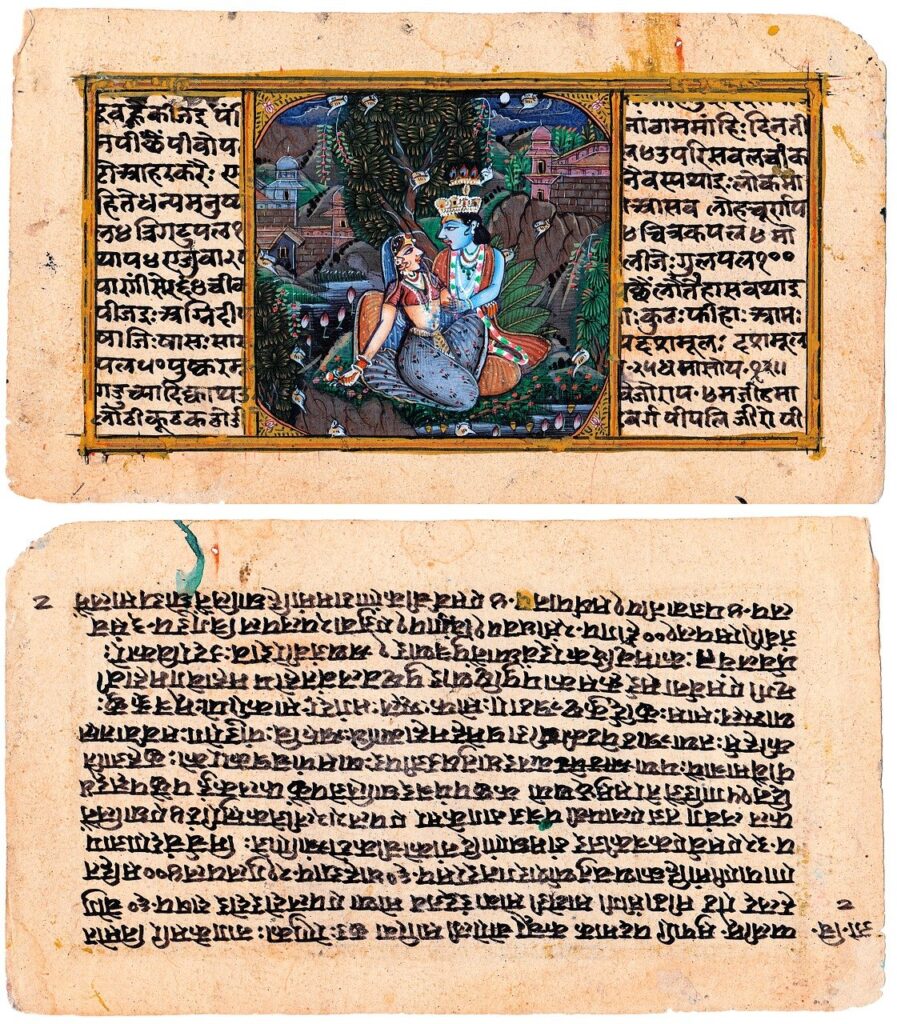
The Vedas were not easy to understand. The size and complexity of the Vedas were better suited to the advanced intellectuals of the bygone era. Vyasadeva, therefore, compiled eighteen Puranas, which are very old historical accounts of this material world, totaling 382,000 verses. Then he compiled epics like the Mahabharata, which contained the ancient history of India in 200,000 verses. The Mahabharata also included the famous Bhagavad Gita spoken directly by Lord Krishna Himself 5,000 years ago. Vyasadeva also compiled the 108 Upanishads (Vedanta).
He finally summarized all of these literatures in a work entitled Vedanta-sutra (Brahma Sutra). But he still felt that something was missing. He discussed his dissatisfaction with his spiritual teacher, Narada, who advised him to compose Srimad Bhagavatam. Thus, with great satisfaction, Vyasdeva compiled in 18,000 verses the essence of all the Vedas – the renowned Srimad Bhagavatam (Bhagavata Purana). This Srimad-Bhagavatam was spoken by Sukadeva Goswami to Parikshit Maharaj, the then Emperor of the whole world. Srimad Bhagavatam or Bhagavata Purana is considered to be the ripened fruit of the Vedas.

The contents of the Vedic literature is divided into 3 categories –
Karma Kanda – dealing with ritualistic sacrifices aimed at enjoying heavenly enjoyments (world accepting).
Jnana Kanda – Philosophical texts aimed at knowledge through renunciation (world denying).
Bhakti Kanda – dealing with loving and worshiping God and rendering selfless service unto Him (world accommodating/transcending).
Hindu holy Books – Unveiling the writings of Hinduism
Below are primarily the various texts that comprise Vedic literature.
#1 The Four Vedas – The Rig Veda, Sama Veda, and Yajur Veda are collectively known as Vedatrayi. Atharva Veda is considered a later addition. Bharat Muni’s Natya Shastra is deemed to be the fifth Veda. The Rig Veda is the oldest among all the other Vedas.
Rig veda – It is the oldest of the Vedas and is divided into ten books (mandalas) and has 1028 hymns praising the various deities. These include Agni, Vishnu, Rudra, Varuna, and other early Vedic gods. It also contains the famous ‘Gayatri mantra’ and the ‘Purusha Shukta’ prayer (10.7.90.1-16).
Yajur Veda – A priestly handbook for use in the performance of yajnas (sacrifices).
Sama Veda – This consists of chants and melodies to be sung during worship and the performance of yajna.
Atharva Veda – Contains hymns, mantras, and chants, largely outside the scope of yajna.
#2 108 Upanishads – The term ‘Upanishad’ means an intimate session between the teacher and the taught. The Upanishads contain the philosophical essence of the Vedas and are therefore called Vedanta. ‘Veda’ means knowledge, and ‘anta’ means the end. In other words, proper understanding of the ultimate meaning of the Vedas is called Vedanta knowledge. Among the 108 Upanishads, the below are considered topmost :
- Isa
- Kena
- katha
- Prasna
- Mundaka
- Mandukya
- Taittiriya
- Aitareya
- Chandogya
- Brihad-aranyaka
- Svetasvatara
#3 Vedanta Sutra – The Vedanta Sutras (also called the Brahma Sutras) are composed by sage Vyasa to systematize the teachings of the Upanishads. There are a total of 550 aphorisms divided between four chapters.
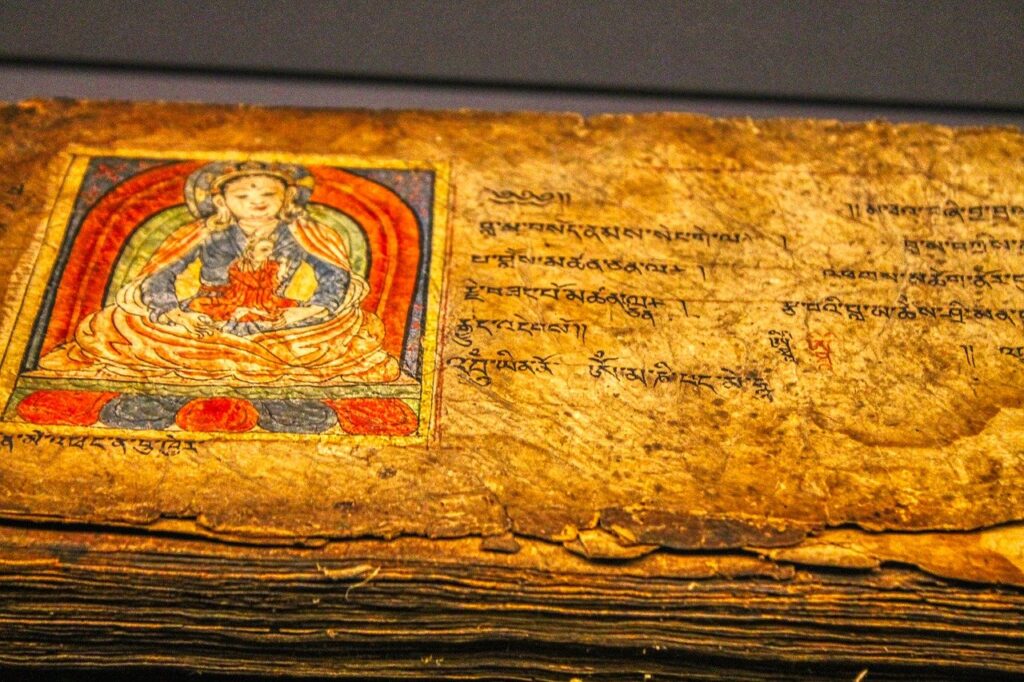
#4 Itihasas (epics) – Comprises two epics : Ramayana (composed by sage Valmiki) and Mahabharata (composed by Veda Vyasa). Mahabharata also includes the all popular Bhagavad Gita.
#5 Bhagavad Gita – Instructions spoken by Lord Krishna to Arjuna, the great warrior, on the battlefield of Kurukshetra. These instructions on life and spirituality are enlightening and can deliver one from the ocean of material existence.
#6 Puranas (history) – Puranas are compiled from related historical facts which explain the teachings of the four Vedas. There are primarily 18 Puranas –
- Vishnu Purana
- Naradiya Purana
- Padma Purana
- Garuda Purana
- Varaha Purana
- Bhagavata Purana
- Matsya Purana
- Kurma Purana
- Linga Purana
- Shiva Purana
- Skanda Purana
- Agni Purana
- Brahmanda Purana
- Brahma Vaivarta Purana
- Markandeya Purana
- Bhavishya Purana
- Vamana Purana
- Brahma Purana
#7 Dharma Shastra (law books) – The Dharma Shastras include the law codes of Sanatan Dharma. They deal with three main subjects: codes of conduct, civil and criminal law, and punishment and atonement. The most important of them is Manu Smriti (or Manu Samhita), which is still consulted in Indian law. It was written by Manu, an administrative demigod (the ‘ruler of mankind’) and the first law-giver. The word “man” is said to derive from Manu. Closely related is ‘ArthaShastra’, a text that delves into the science of acquiring wealth and power.
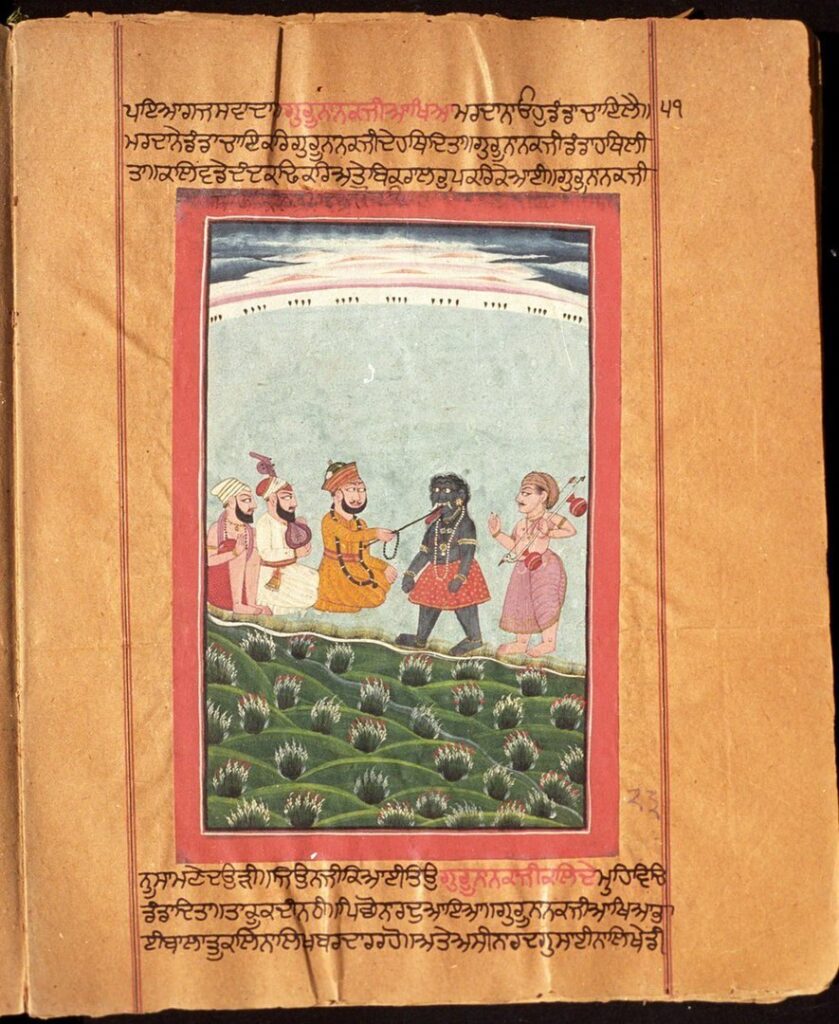
#8 Vedangas – auxiliary science related with Vedic study such as astronomy, astrology and phonetics.
#9 Upavedas – These are sciences not directly related to Vedic study. They are : Dhanurveda (deals with the art of warfare), Gandharvaveda (deals with the music), Silpaveda (deals with art and architecture) and Ayurveda (deals with medicine).
#10 Sectarian texts (e.g. agamas, tantras) – deals with ritualistic practices, and includes the Vaishnava Pancharatra, Shaiva Agamas and Tantras, and the Shakta Devi Shastra.
#11 Vernacular literature – Many subsidiary vedic texts, particularly during the medieval period, are written in local vernaculars such as Bengali, Tamil, Brijbasi, Gujarati, etc

